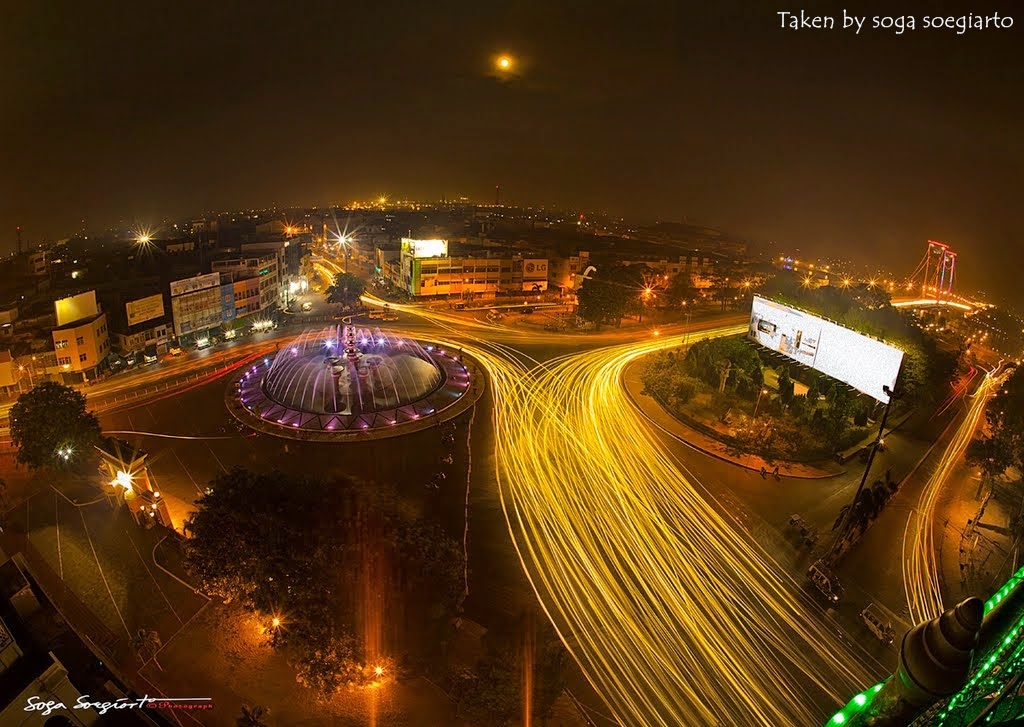First off, these pics isn't mine, I got it from other source. Okey, here you go,
Okay, Now is time for the history, Check this out guys :p


Ampera Bridge is a vertical lift brifge in the city of Palembang, South Sumatra, Indonesia,
which is the landmark of the city. It connects Seberang Ulu and
Seberang Ilir, two regions of Palembang. It can no longer be opened to
allow ships to pass.
The bridge was planned during the era of Indonesia's first president,
who wanted a bridge that could open and be a match for London's tower bridge.
The funds for the construction came from Japanese war reparations, with
the Fuji Car Manufacturing Co. Ltd being given responsibility for
design and construction. However, at the time, Japan had no bridges of
this type, and Fuji Car had no bridge-building experience. The official
opening was carried out by Minister/Commander of the Army Lieutenant
General Ahmad Yani on 30 September 1965, only hours before he was killed by troops belonging to the
30 September movement. At first, the bridge was known as the Bung Karno
Bridge, after the president, but following his fall, it was renamed the
Ampera Bridge.
For a few years after it was opened, the center span could be lifted
at 10 meters per second to allow ships of up to 44.5m in height to pass
underneath. However this only occurred a few times, and after 1970 it
could no longer be opened. The official reason for this was that the 30
minutes needed to raise the bridge was causing unacceptable delays, and
that in any case silting of the river had made it impassable for large
ships. However, according to architect Wiratman, who acted as a
consultant before the construction, the design of the bridge was flawed
from the outset because of the soft mud on which it was built. He
maintains that his concerns were ignored for political reasons, and that
as the towers' foundations shifted, the bridge deformed to the extent
that it could no longer be opened. The ballast weights needed to balance
the wight of the bridge were removed in 1990 to prevent possible
accidents were they to fall
References :
Imelda Akmal (Ed) (2010). Wiratman: Momentum & Innovation 1960-2010. Jakarta: Mitrawira Aneka Guna. ISBN 978-602-97997-0-5. in http://en.wikipedia.org/wiki/Ampera_Bridge (last modified on 17 October 2013 at 19:26.)

















